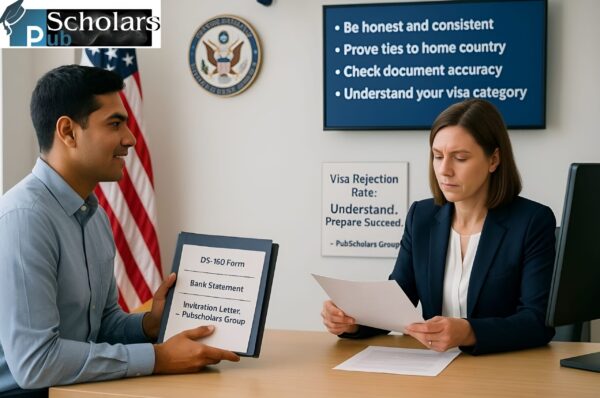- Why is the visa rejection rate high for US visas?
- Here are some of the most common reasons why the visa rejection rate remains more:
- 1.Incomplete or incorrect application form
- 2. Weak financial documents
- 3. Poor interview performance
- 4. Lack of relations for the country
- 5. Wrong visa category selection
- Documents Causing Visa Rejection
- Understanding the Tourist Visa Rejection Rate USA
- Travel history and visa approval
- How to prove you will return home
- What to do if your visa is denied
- How to reduce your visa rejection risk
- FAQs About Visa Rejection Rate
- 1.What is a visa rejection rate for US?
- 2. What is Section 214 (B)?
- 3. Which documents are often responsible for rejection?
- 4. Why is tourist visa rejection rate USA so high?
- 5. Can I apply again after rejection?
- Yes, but only after fixing issues in your previous application. Re -applying without changes usually leads to the same result.
- 6. What helps a conference in visa approval?
- 7. Does minor application errors lead to rejection?
- 8. Is having family in the US a problem?
- Final Thoughts
I am a seasoned professional with over 9 years of transformative experience in the domains of molecular biology, immunology, and clinical research. With a career that spans from 2006 to 2018, my journey has been marked by a relentless pursuit of scientific excellence and an unwavering commitment to improving healthcare outcomes through groundbreaking research. I have worked at one of India’s premier medical institutions, AIIMS(All India Institute of Medical Sciences), where I contributed significantly to the fields of molecular biology and clinical research. My expertise in protein analysis and genetic studies allowed me to identify potential biomarkers and improve diagnostic accuracy, contributing to better healthcare outcomes for patients. Notably, the research work has been published in prestigious scientific journals such as the Indian Journal of Ophthalmology and the British Journal of Ophthalmology.
Publication in these esteemed journals reflects my commitment to advancing medical science and sharing insights with the global research community. These publications highlight my expertise in areas ranging from gene polymorphism and immune response mechanisms to the effects of chronic drug therapy, all contributing to the larger body of scientific knowledge. My passion for scientific communication led me to pursue an Executive Diploma in Medical Writing from CliMed Research Solutions and Curio Training and Research Institute (CTRI), India. This certification has further refined my ability to bridge the gap between complex scientific research and its practical applications in healthcare. My passion for content writing drives me to continuously create content that derives engagement ,build trust, and leaves a lasting impression on readers”.




